6 Ways To Recognize Top-Quality Beef at the Grocery Store, According to Experts

Navigating the beef section at the grocery store can be daunting. All those cuts of meat and meat brands—how to choose the right ones? If you need help selecting top-quality beef or have ever wondered what Prime, Choice, or Select actually mean, keep reading.
“There are different aspects of beef quality, including color, tenderness, flavor, juiciness, texture,” said Xiang (Crystal) Yang, Ph.D., assistant professor and meat scientist at the University of California Davis Department of Animal Science. “Thus, there are different things consumers need to know to select high-quality beef.”
All meats, by law, must pass inspection, according to BeefLovingTexans. Meat products are highly regulated to ensure food quality and safety, which is excellent since we taxpayers are the ones footing the bill for the inspections. According to Yang, meat must include inspection information on the packaging, so at the very least, make sure your beef comes from an inspected facility. Beyond that, you may consider your choice based on the U.S. Department of Agriculture’s (USDA) beef grading system. But, what’s in a grade?
Making the grade
Years ago, the USDA’s Agricultural Marketing Service attempted to make things easier on consumers and industry professionals alike by establishing a beef grading system. These grades are not required like inspections. They are voluntary and optional. Beef packers can use these grades to help market their wares to consumers.
Trained USDA meat graders establish grades of beef using camera-based, electronic instruments and/or their subjective expertise. They are looking for two things: palatability related to eating satisfaction (read: tenderness, juiciness, flavor) and yield (amount of usable meat). These experts must also ascertain the degree of marbling (white flecks and streaks of fat) found in the beef and the estimated age of the animal when slaughtered.
There are eight grades of beef, but you’ve probably only heard of three: Prime, Choice, and Select. The remaining five are Standard, Commercial, Utility, Cutter, and Canner. Standard and Commercial can be sold at the grocery store as ungraded, “No Roll,” or store-brand meat. The remaining three grades can be used in canned soups or processed products and frozen meals. Here is a breakdown of the top three grades of beef according to the USDA:
- Prime: Prime beef is produced from young, well-fed cattle. It has the most marbling, is produced in smaller quantities than other grades, and is often sold in hotels and restaurants. Prime roasts and steaks are excellent for roasting, grilling, or broiling.
- Choice: Choice beef is high quality and produced in the highest quantity, but has less marbling than Prime. Choice roast and steaks, especially from the rib and loin, will be very tender, juicy, and flavorful. They are suited for roasting, grilling, or broiling. Less tender cuts are perfect for slow-cooking.
- Select: Select beef is slightly leaner than Prime and Choice because it has less marbling. It can lack some tenderness, flavor, and juiciness as compared to the higher grades. Select-grade beef often benefits from slow-cooking or from marination prior to grilling or broiling.
Beyond the grade
Whether this grading system is influential in your purchasing decisions or not, other factors come into play when choosing top-quality beef. Here are some tips from various experts on avoiding low-quality selections and opting for better, fresher, and tastier ones.
Keep an eye out for coloring
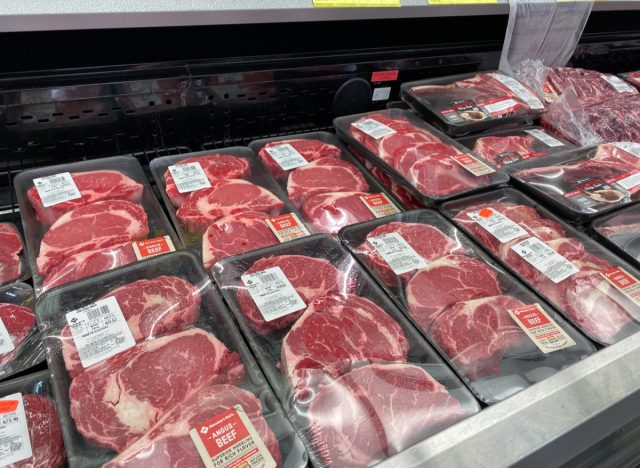
Most experts agree that quality beef will have a cherry red, maybe even purple hue, depending on the packaging. (Note: The reddish color you see in beef is caused by the protein myoglobin, which contains iron.)
“Meat not exposed to oxygen is purple—think vacuum-packed meat. Once it is exposed to oxygen, it turns red—typically seen in the meat case or in a traditional foam tray covered in film overwrap,” explains Mandy Carr, senior executive director of Scientific Affairs at the National Cattlemen’s Beef Association. “The longer beef is exposed to oxygen, it can start to turn brown, and that is usually if you see it past its sell-by date.”
If you’re wondering if the red you’re seeing is food coloring at all, think again. “While some cuts of meat occasionally have a marinade or flavor added that may add color to the package of meat, food dye is not something that is usually added to beef you will find in the meat case at your local grocery store,” Carr said, noting that research shows consumers “associate bright red beef with wholesomeness.”
Check the marbling
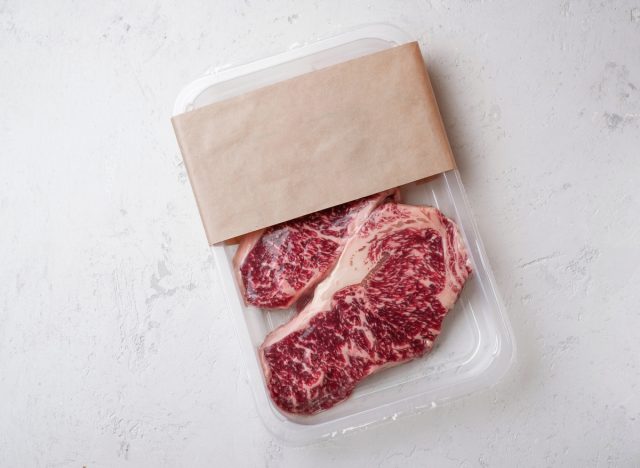
Marbling is just a fancy way of talking about intramuscular fat that’s interspersed throughout the beef, giving it the appearance of marble. “Top-quality beef has a good deal of marbling,” said registered dietitian Melissa Mitri. “A high degree of marbling signifies a high-quality meat rich in healthy monounsaturated fatty acids.”
Test the texture
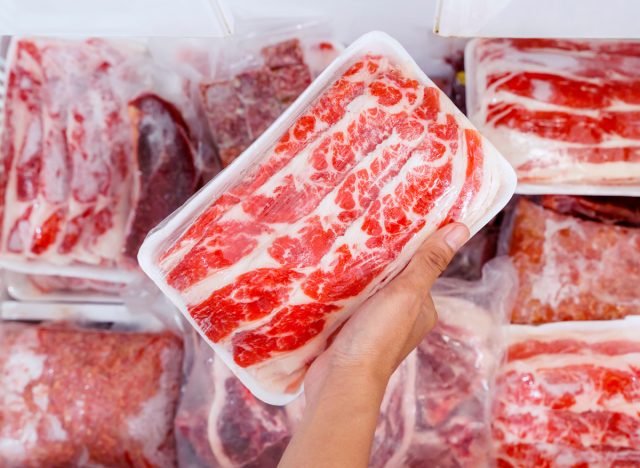
If you push on a cut of beef and it’s mushy or soft, or if it looks like it’s going to fall apart, you should probably avoid it. According to an article written by Jeff Campbell, “The Grocery Store Guy,” beef should be compact, firm, dry, and dense. If it’s not, it’s either low quality or it was handled incorrectly along the way.
Understand the price
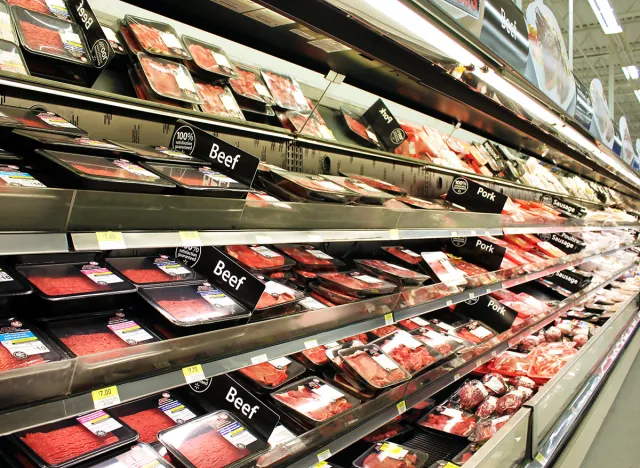
Phi Dang, director of Sidepost, a company that provides shopping advice to its customers, said price is usually an indicator of quality, but not always. It depends.
“Higher prices usually mean that the meat is of higher quality,” he said. But, “there are other factors as well, such as whether it was raised organically or raised in a strict meat farm.”
He suggested asking the butcher questions about the different details of a beef product so you can make an informed decision.
Know the intended use of your beef
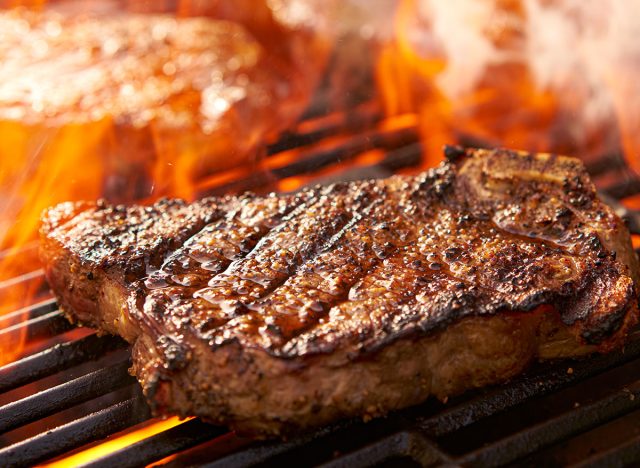
Eric “Boss-Man” Clark, whose family has been making meat products from jerky to sausage for generations at Fortune Creek, said what cut you choose can be determined by how you’re going to use it.
For example, “soups and stews can get away with something a little lower in quality, while a higher-quality cut is best for grilling,” he said. “For burgers, I always go for lean beef, and for a roast, it depends on whether you’re smoking or roasting and how much time you have available for either option.”
Pay attention to packaging and sell-by dates

Carr said to make sure the package of beef you want to buy is cold with no holes or tears and contains no excessive liquid.
Also, be sure to purchase beef on or before the sell-by date noted on the package label.
“The sell-by date allows the consumer an opportunity to enjoy the product with enough time before expiration becomes an issue,” says Eric Clark. Generally, that could be 72 hours or so past the sell-by date, depending on the product. When in doubt, ask someone in the meat department what the sell-by date means to that particular store and for that product.
In closing, Carr added, “The good news for consumers is that the beef industry as a whole is currently producing more high-quality beef than ever before, with more than 80% grading at choice or above.”
A previous version of this article was originally published on Jun 6, 2022.









